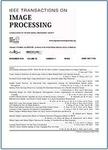版权所有:内蒙古大学图书馆 技术提供:维普资讯• 智图
内蒙古自治区呼和浩特市赛罕区大学西街235号 邮编: 010021

作者机构:Univ Calif Santa Barbara Dept Elect & Comp Engn Santa Barbara CA 93106 USA
出 版 物:《IEEE TRANSACTIONS ON IMAGE PROCESSING》 (IEEE Trans Image Process)
年 卷 期:1998年第7卷第6期
页 面:785-793页
核心收录:
学科分类:0808[工学-电气工程] 08[工学] 0812[工学-计算机科学与技术(可授工学、理学学位)]
基 金:DSP Group, Inc Moseley Associates National Semiconductor Corp., Qualcomm, Inc Rockwell International Corporation National Science Foundation, NSF, (NCR-9314335) Cisco Systems Texas Instruments, TI University of California, UC
主 题:adaptive quantization constrained storage universal codebook universal source coding vector quantization
摘 要:Many image compression techniques require the quantization of multiple vector sources with significantly different distributions. With vector quantization (VQ), these sources are optimally quantized using separate codebooks, which may collectively require an enormous memory space, Since storage is limited in most applications, a convenient may to gracefully trade between performance and storage is needed, Earlier work addressed this problem by clustering the multiple sources into a small number of source groups, where each group shares a codebook, We propose a new solution based on a size-limited universal codebook that can be viewed as the union of overlapping source codebooks, This framework allows each source codebook to consist of any desired subset of the universal codevectors and provides greater design flexibility which improves the storage-constrained performance. A key feature of this approach is that no two sources need be encoded at the same rate. An additional advantage of the proposed method is its close relation to universal, adaptive, finite-state and classified quantization, Necessary conditions for optimality of the universal codebook and the extracted source codebooks are derived. An iterative design algorithm is introduced to obtain a solution satisfying these conditions. Possible applications of the proposed technique are enumerated, and its effectiveness is illustrated for coding of images using finite-state vector quantization, multistage vector quantization, and tree-structured vector quantization.